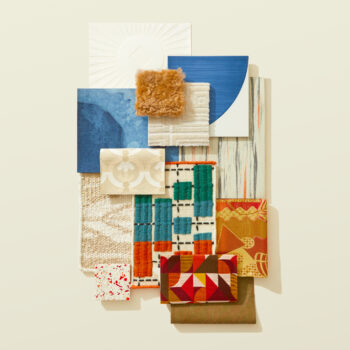
Integrating organic forms into interior design brings a sense of natural flow and tranquility, transforming spaces with shapes that mirror the curves and fluidity found in nature. This approach softens architectural lines, enhances aesthetic interest, and creates a welcoming environment that feels both elegant and comforting. Organic forms, from archways to curved furniture, allow for spaces that are both visually dynamic and harmonious.
One of the most effective ways to introduce organic forms is through curved archways and doorways. Unlike rigid, rectangular frames, rounded arches evoke a sense of openness and gentle movement, drawing the eye smoothly between spaces and creating a continuous, inviting flow. This design choice recalls ancient architectural forms, adding depth and timeless sophistication to modern interiors. Archways can be simple and minimalist or feature subtle details, adapting seamlessly to both contemporary and classic styles.
Furniture with soft, rounded edges, rather than sharp corners, enhances comfort and contributes to a more relaxed ambiance. Curved sofas, oval coffee tables, and circular chairs bring balance and fluidity to a room, while their rounded forms promote conversation and interaction. Sculptural pieces, such as statement chairs or uniquely shaped tables, act as focal points that add visual intrigue without disrupting the room’s natural flow. These pieces often serve dual purposes, as both functional furniture and art that complements the organic theme.
Incorporating textures and patterns that echo natural forms, like wood grain, stone veining, and leaf or wave patterns, helps reinforce the organic aesthetic. Textiles and wallcoverings with flowing lines or asymmetrical patterns create subtle interest without overpowering the space, adding a tactile layer that enhances the sense of movement.
Light fixtures that incorporate organic shapes, such as pendant lights with flowing contours or lamps with rounded bases, provide gentle illumination while reinforcing the natural theme. These fixtures distribute light more softly, creating a warm glow that complements the organic elements throughout the space.
Using organic shapes does not mean abandoning structure altogether. When paired with more structured, geometric elements, organic forms stand out and add softness to spaces. This balance creates an engaging, layered effect that gives the room depth and dimension.
Incorporating organic forms, from architecture to furniture, creates an atmosphere of natural beauty and calm. Embracing these flowing shapes helps designers craft spaces that feel effortlessly inviting, fostering relaxation and a deeper connection to the natural world.
Looking to explore more about organic forms in design? Check out our article on Conceptual Ceilings.







